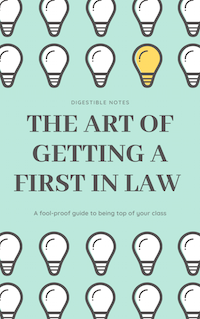Handling Stolen Goods
Introduction
⇒ The offence can be broken down into four elements (as seen in section 22 Theft Act 1968 and expanded in section 24(2)):
- (1) It must be shown that the goods have already been stolen.
- (2) It must be shown that the defendant handled the property.
- (3) It must be shown that the defendant knew or believed that the goods were stolen.
- (4) The defendant was dishonest.
(1) It must be shown that the goods have already been stolen
⇒ It is not necessary for the prosecution to prove who stole the goods, as long as it is clear the goods have been stolen by someone.
⇒ If the defendant believes the goods to be stolen, but in fact they are not, then the defendant may be guilty of an attempted handling offence.
(2) It must be shown that the defendant handled the property
⇒ It must be shown that the defendant engaged in or arranged one of the following:
- Receiving the property; or
- Undertaking any of the following:
- retention;
- removal;
- disposal;
- realisation
- Assisting in any of the following:
- retention;
- removal;
- disposal;
- realisation
... of the goods either by another or for another's benefit.
... of the goods either by another or for another's benefit.
⇒ The terms used here are readily understandable and are to be given their normal meanings.
The Art of Getting a First in Law - ONLY £4.99
FOOL-PROOF methods of obtaining top grades
SECRETS your professors won't tell you and your peers don't know
INSIDER TIPS and tricks so you can spend less time studying and land the perfect job
We work really hard to provide you with incredible law notes for free...
The proceeds of this eBook helps us to run the site and keep the service FREE!

(3) It must be shown that the defendant knew or believed the goods were stolen
⇒ The test is subjective: it does not matter whether a reasonable person would have known the goods were stolen, what matters is what the defendant knew.
⇒ The words knowledge and belief are to be given their normal meaning.
⇒ Suspicion the goods are stolen is not enough.
(4) The defendant was dishonest
⇒ To convict the defendant of handling the jury must be persuaded that the defendant was dishonest.
⇒ The Ghosh test for dishonesty will be used (R v Ghosh [1982]).
⇒ The Ghosh test requires the jury to consider two separate questions in deciding whether or not the defendant was dishonest:
- Was what the defendant did dishonest according to the standards of reasonable and honest people?
- Would the defendant realise that reasonable and honest people would regard what he/she did as dishonest?
⇒ If the answer to both these questions is ‘yes’ then the defendant is dishonest. If the answer to either question is ‘no’ then the defendant is not dishonest.
⇒ However, note, the full test does not need to be used in all cases; only the first question needs to be asked unless the defendant gives evidence that he or she thought his or her conduct was honest according to the standards of ordinary people.
⇒ It will be rare that someone who is handling what he or she knows or believes to be stolen goods will e able to claim successfully that he or she was acting honestly
Law Application Masterclass - ONLY £9.99
Learn how to effortlessly land vacation schemes, training contracts, and pupillages by making your law applications awesome. This eBook is constructed by lawyers and recruiters from the world's leading law firms and barristers' chambers.
✅ 60+ page eBook
✅ Research Methods, Success Secrets, Tips, Tricks, and more!
✅ Help keep Digestible Notes FREE

